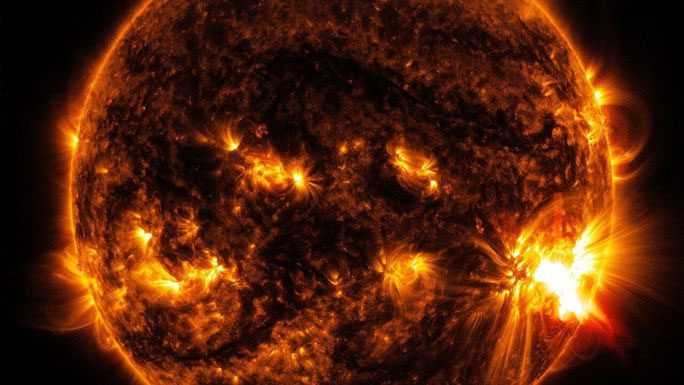The Earth is expected to experience two solar radiation bursts (CME, also known as solar storms) simultaneously on August 18, posing a threat to the power grid.
According to Sputnik, the latest forecasting model from the National Oceanic and Atmospheric Administration (NOAA) indicates that two streams of radiation from the Sun, which erupted on August 14 and 15, are heading toward Earth and are expected to impact our planet on August 18. These two CMEs have the potential to disrupt and damage the power grid as well as spacecraft in orbit.
NOAA reports that the first CME is a black plasma cloud, while the second CME poses a risk of geomagnetic storms.
Increased activity on the surface of the Sun, as it reaches its peak during an 11-year cycle, has resulted in beams directed toward Earth. CMEs have struck our planet several times in recent months.

Two “solar storms” are about to hit Earth, putting the power grid at risk. (Photo: COO)
NOAA states that the CMEs could cause minor G1 geomagnetic storms or more severe G2-G5 storms, leading to fluctuations in the power grid, transformer explosions, and voltage alerts in electrical systems if they occur over an extended period. CMEs can also affect spacecraft operations, radio communications, and create stunning auroras that light up the night sky.
The worst solar storm ever recorded, known as the Carrington Event, occurred in 1859. It generated such strong currents that telegraph equipment caught fire, and auroras were visible near the equator.
Most recently, in April 2022, a strong G3 solar storm was recorded by NOAA. It began being observed at 1:10 AM EDT on April 10, which is 12:10 PM on April 10 in Vietnam.
This storm originated from a solar radiation burst that disturbed the interplanetary magnetic field for several hours.
Solar storms can cause significant damage to human and animal technology, affecting power systems, satellite navigation, and migratory animals. At the highest level of G5, the power grid could collapse, leading to disaster, satellite navigation could be completely disrupted, and auroras could “explode” globally.


















































